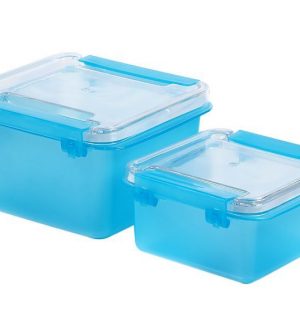- See What Saffron Can Do for Sleep and Heart Health
- 6 Common Mistakes to Avoid Before Your Physical
- Can Sweating Really Help You Beat a Cold?
- Strengthening Your Relationship: Practical Strategies
- Skip Storing This Everyday Product in the Fridge Door
- Green Tea + B3 Pairing May Boost Brain Health
- Navigating Your Midlife Crisis: Embracing New Possibilities
- City Raccoons Showing Signs of Domestication
- Mapping the Exposome: Science Broadens Focus to Environmental Disease Triggers
- One Week Less on Social Media Linked to Better Mental Health
In Animal Study, Tiny Ingested Plastic Particles Infiltrated Brain

Researchers studying how tiny plastic particles can breach the protective blood-brain barrier report they have found that answer, thanks to mice and computer modeling.
“With the help of computer models, we discovered that a certain surface structure [biomolecular
corona] was crucial in enabling plastic particles to pass into the brain,” said study co-author Oldamur Hollóczki, of the Department of Physical Chemistry at the University of Debrecen in Hungary.
The blood-brain barrier prevents pathogens or toxins from reaching the brain. It’s similar to what happens in the intestine, which also has a protective wall that can be breached by tiny plastic particles. Scientists are studying how these plastics, known as MNPs, can affect human health.
MNPs in the gastrointestinal tract have been linked with local inflammatory and immune reactions, as well as the development of cancer.
“In the brain, plastic particles could increase the risk of inflammation, neurological disorders or even neurodegenerative diseases such as Alzheimer’s or Parkinson’s,” said study leader Dr. Lukas Kenner of the Department of Pathology at the Medical University of Vienna in Austria. He spoke in a news release from his university.
More research is needed, Kenner said.
Researchers studied this in mice using oral administration of polystyrene, a plastic often found in food packaging. The tiny plastics could be detected in the mouse brains just two hours later.
Nanoplastics are smaller than 0.001 millimeters. At 0.001 to 5 millimeters, some are still visible to the naked eye.
They enter the food chain through solid foods and liquids. One study found that anyone who drinks around 50 to 60 ounces of water per day from plastic bottles will ingest around 90,000 plastic particles a year.
Depending on location, drinking tap water can reduce this to 40,000 particles.
“To minimize the potential harm of micro- and nanoplastic particles to humans and the environment, it is crucial to limit exposure and restrict their use while further research is carried out into the effects of MNPs,” Kenner said.
However, research on animals may not have the same results in humans.
The authors said this discovery about how plastics breach the blood-brain barrier has the potential to advance research in this area.
Their findings were recently published in the journal Nanomaterials.
More information
The U.S. National Oceanic and Atmospheric Administration has more on microplastics and their impact on the environment.
SOURCE: Medical University of Vienna, news release, April 21, 2023
Source: HealthDay
Copyright © 2025 HealthDay. All rights reserved.










